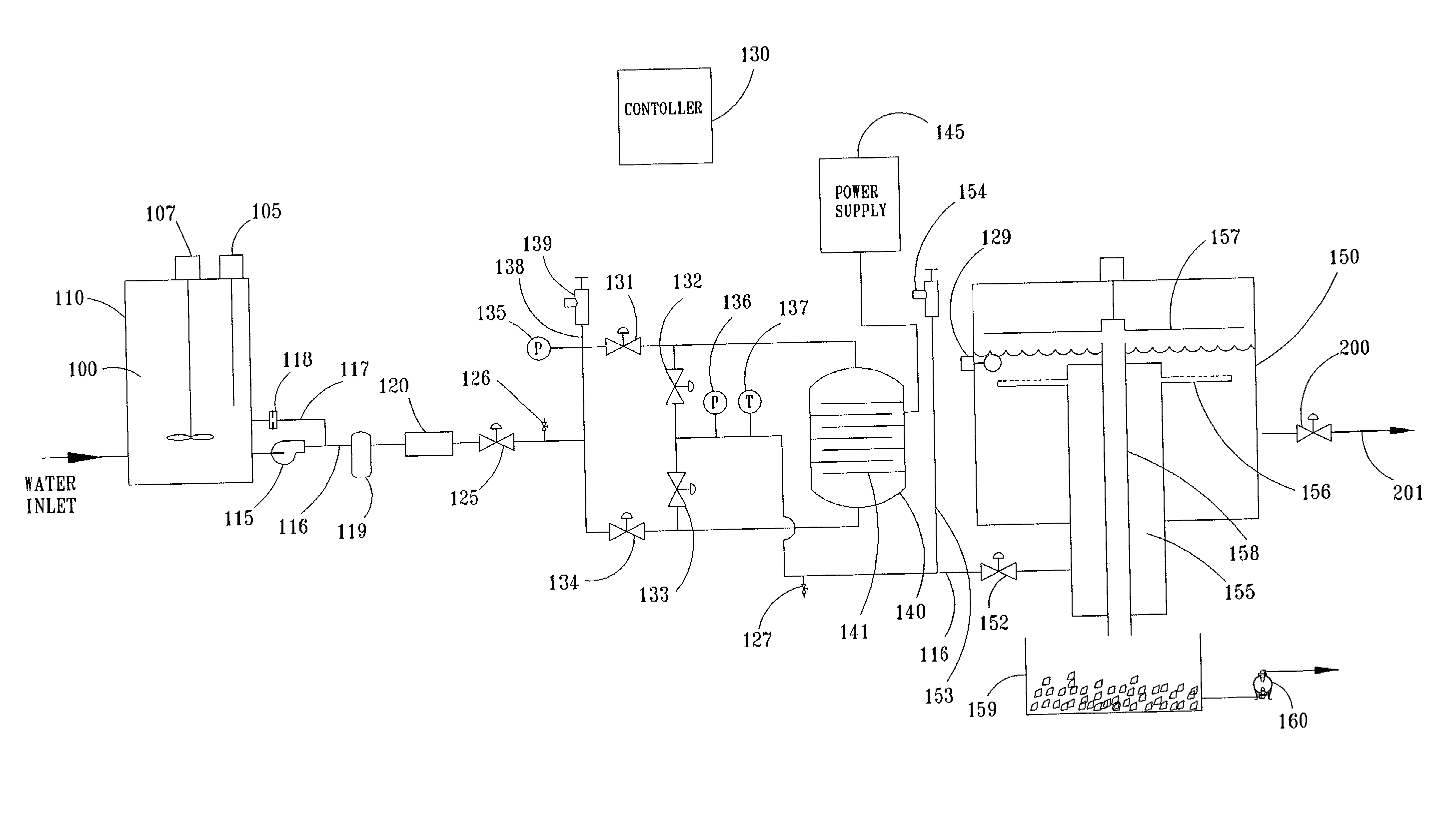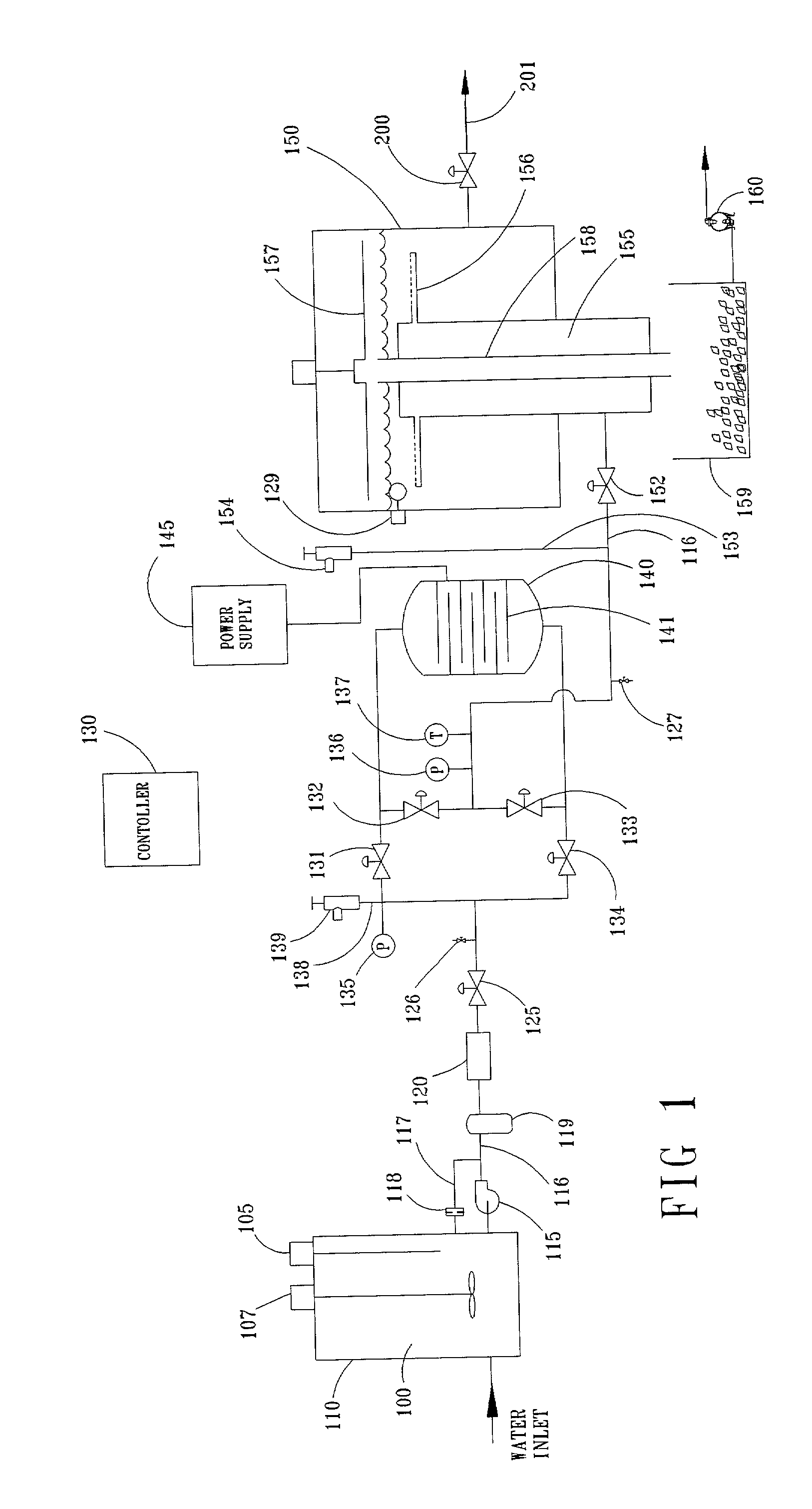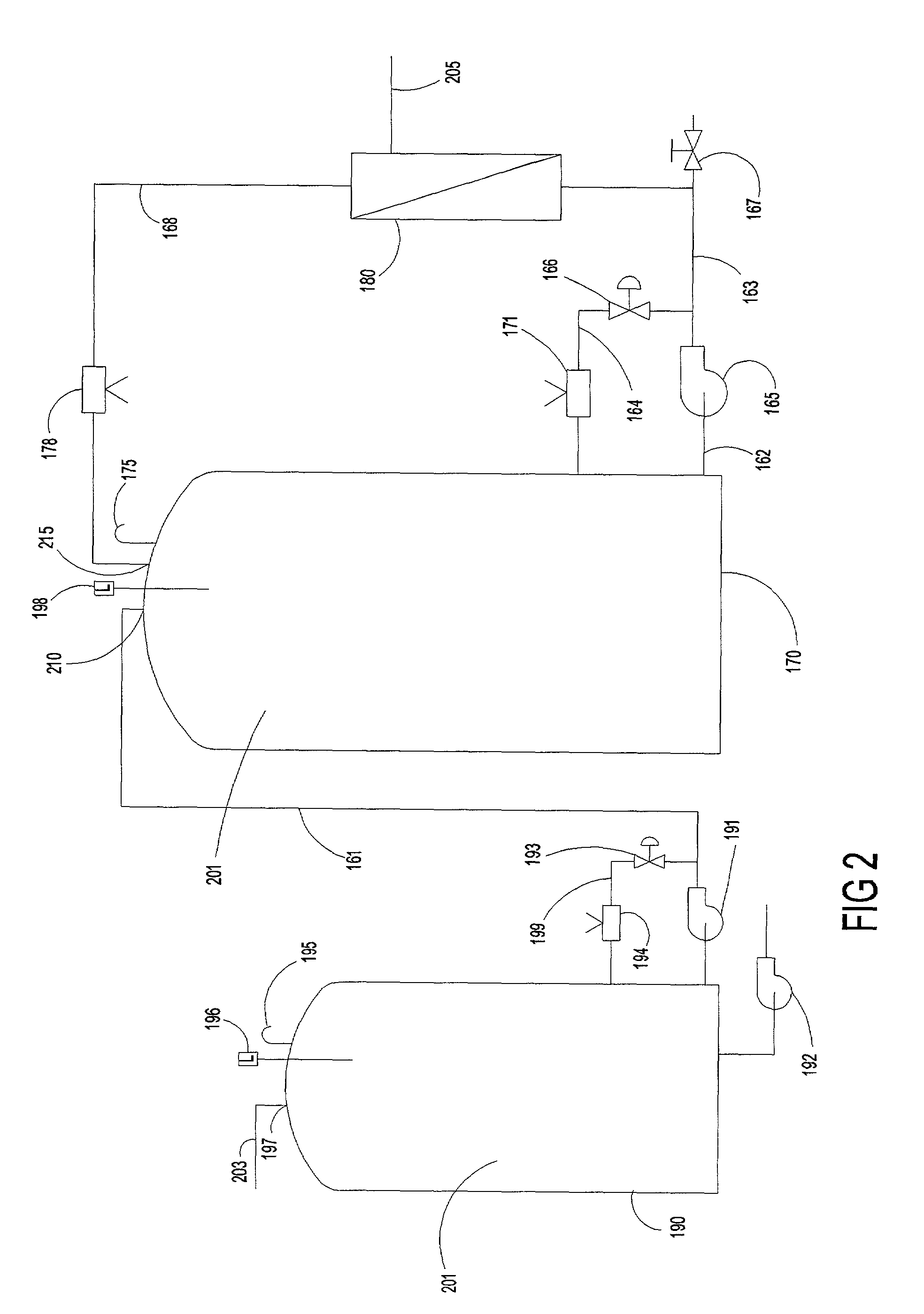Process for electrocoagulating waste fluids
a waste fluid and electrocoagulation technology, applied in the direction of fluid pressure measurement, liquid/fluent solid measurement, peptide measurement, etc., can solve the problems of contaminated removal, kaselco system, inability to remove entrained gas bubbles and clear flocs from wastewater in a single step
- Summary
- Abstract
- Description
- Claims
- Application Information
AI Technical Summary
Benefits of technology
Problems solved by technology
Method used
Image
Examples
example 1
[0035] Petrochemical refining of alcohols (butanol, propanol, etc.) often use rare earth catalysts, such as Raney nickel and cobalt catalysts. Such catalysts result in waste fluids that contain high levels of organics and residual amounts of dissolved metals. Because of the high levels of organics that are present, these waste fluids are typically treated biologically. Biological organisms that consume the organics cannot tolerate high levels of dissolved metals such as chromium, cobalt, nickel, zinc, etc. and therefore biological systems do not perform well in this case. On the other hand, chemical treatment is effected in the presence of organics, and sometimes the chemicals necessary to precipitate metals in the presence of organics are the same chemicals that are detrimental to biological treatment processes. This process removes the dissolved metals and suspended solids from the wastewater therefore allowing clarified, metals free water to enter the bioreactor where the organic...
example 2
[0036] Wastewater collected on offshore drilling and production platforms and other maritime applications contains a variety of contaminates including human waste, laundry, food and industrial waste. Stormwater, deckwash and produced waters must also be contained and disposed of properly. Space requirements are limited and logistics hinder delivery of water treatment chemicals as well as other supplies, including water.
[0037] This patent provides a non-chemical system for the removal of dissolved metals and suspended particulates and a membrane bioreactor for the treatment of dissolved organics. Combining electrocoagulation, flotation, and membrane bioreactor technologies results in the most compact footprint available and a guaranteed, treated effluent quality. Water can be recycled from various points in the system dependent on required quality. An array of reverse osmosis membranes can be included as final polish to produce drinking quality water. The process provides a reliable,...
PUM
| Property | Measurement | Unit |
|---|---|---|
| pressure | aaaaa | aaaaa |
| pressure | aaaaa | aaaaa |
| pressure | aaaaa | aaaaa |
Abstract
Description
Claims
Application Information
 Login to View More
Login to View More - R&D
- Intellectual Property
- Life Sciences
- Materials
- Tech Scout
- Unparalleled Data Quality
- Higher Quality Content
- 60% Fewer Hallucinations
Browse by: Latest US Patents, China's latest patents, Technical Efficacy Thesaurus, Application Domain, Technology Topic, Popular Technical Reports.
© 2025 PatSnap. All rights reserved.Legal|Privacy policy|Modern Slavery Act Transparency Statement|Sitemap|About US| Contact US: help@patsnap.com



